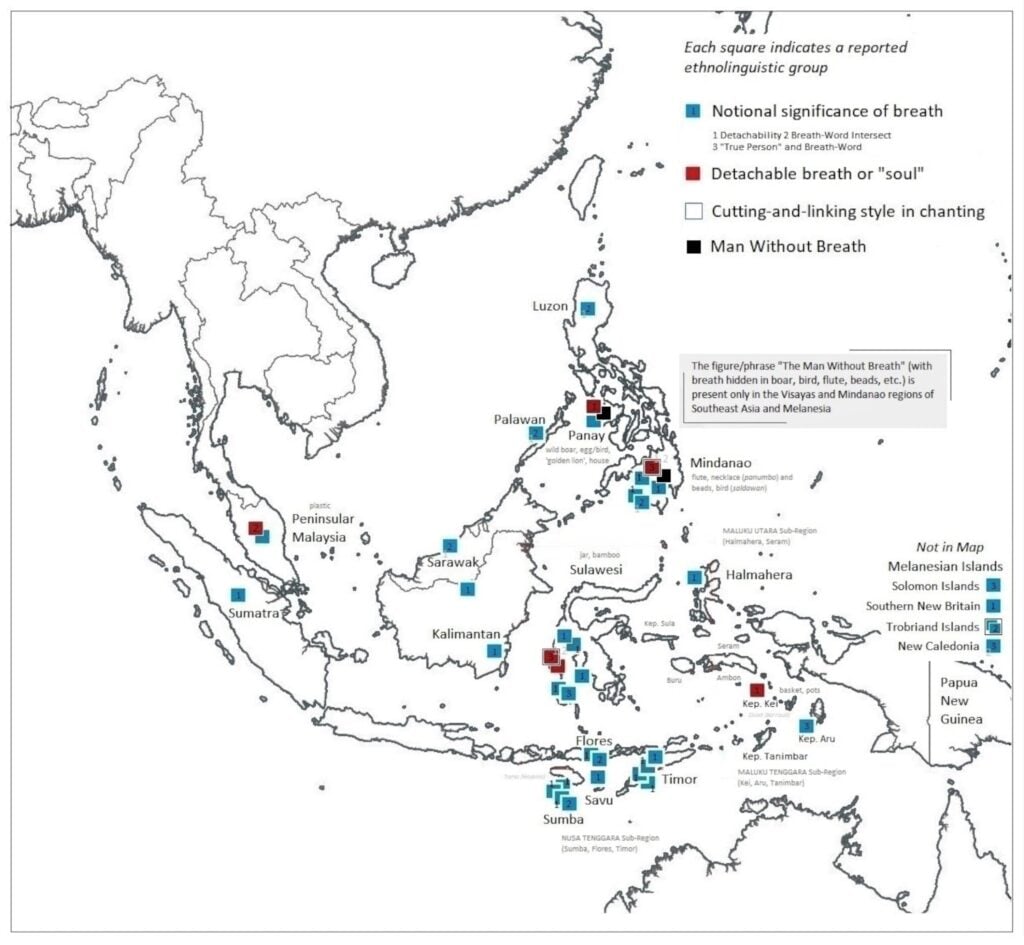In Visayan and Mindanao epics, the “Man With No Breath” is seen as deathless and invulnerable, contrary to the common view of continuous breathing as a sign of wellbeing
20 Aug 2024

In Visayan and Mindanao epics, one encounters the figure of an enigmatic character called the “Man With No Breath”. This figure is durable, as it has been recorded in epics collected from the 1950s up to the 2000s, and found across the Philippines in Panay and in southern Mindanao. Moreover, the idea that breath can be detached and placed elsewhere is likewise found across
Island Southeast Asia and the Austronesian-speaking world, as our comprehensive mapping demonstrates.
We view this spatial and temporal durability as a regional cultural feature that foregrounds “breath” and “breathing” (in the negational form of “no breath”) as a key category in Philippine and wider Southeast Asian/Austronesian “animism.” However, we approach animism not simply as beliefs in spirits, but by proposing what we call a “logic of breathing” that is instantiated in various socio-cultural domains—from observances during deaths and births, to marriage conventions and emotive expressions.
In beliefs and practices governed by this “logic of breathing,” breathing is symbolically construed as “cutting and linking,” with cutting—as a symbolic entity and action—specifically associated with marking-with-value. This may seem counter-intuitive because we are used to the idea that it is continuous (or “not-cut”) breathing that connotes wellbeing. But in the epics we studied, it is the Man With No Breath character that is actually considered deathless and invulnerable in his “no breath” state. We thus argue that breathing as cutting and as marking-with-value is more generative of insights addressing cultural-philosophical paradoxes in indigenous/Austronesian “religion” and “ritual”.
This publication works along these three themes:
(a) Juxtaposing Visayan and Mindanao epics and the key, durable “metaphorical” figures that occur in them (specifically, the “Man With No Breath”);
(b) Broadening the ethnological comparative context of studying these Philippine epics to cover Southeast Asian and Austronesian-speaking world (we accomplished this through a comprehensive mapping of beliefs, stories, philosophizing, etc., revolving around the detachability of breath in this broad region); and
(c) Proposing an approach in studying these “metaphorical” figures as indices of a durable schema and notions of “personhood” and “self” (in the local terminology of “souls” and “spirits”) that can be found across this geographic domain.
This study is therefore significant because these three aspects/approaches are not usually drawn together and centered in studies of Philippine epics. We observed that Philippine epic studies have been, by and large, more literary or folkloristic in analytical bent rather than anthropological. Our contribution is a step towards the study of indigenous epics as a key facet in the study of the
anthropology of society and its institutions, as well as (and more importantly), self and personhood.
Authors: Myfel D. Paluga and Andrea Malaya M. Ragragio (Department of Social Sciences, University of the Philippines Mindanao/Institute of Cultural Anthropology and Development Sociology, Leiden University)
Read the full paper: https://www.tandfonline.com/doi/full/10.1080/0967828X.2023.2234820
